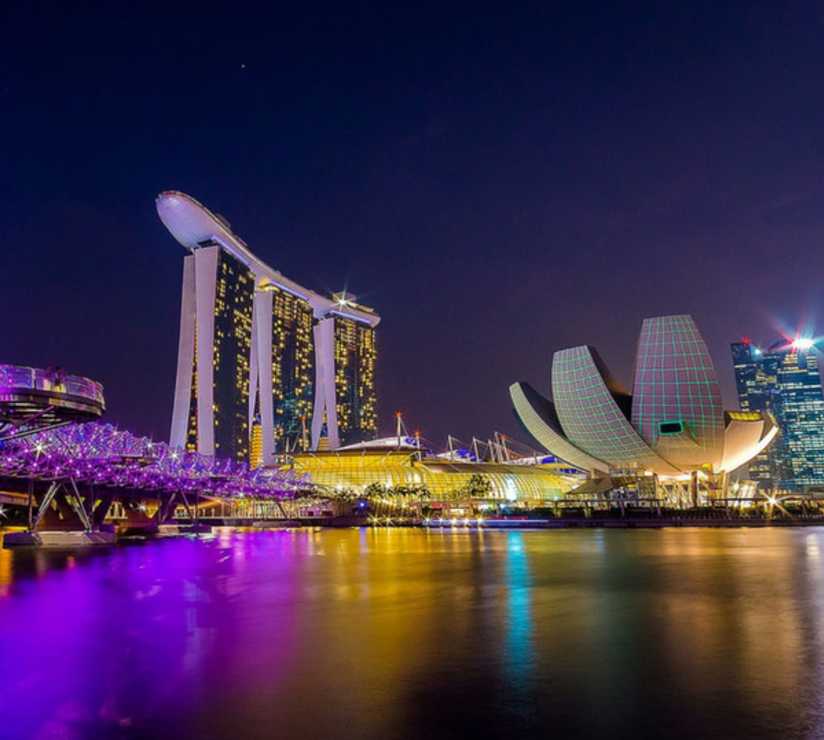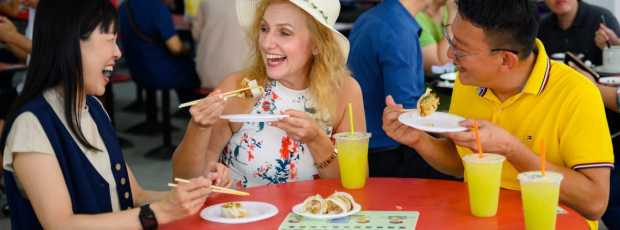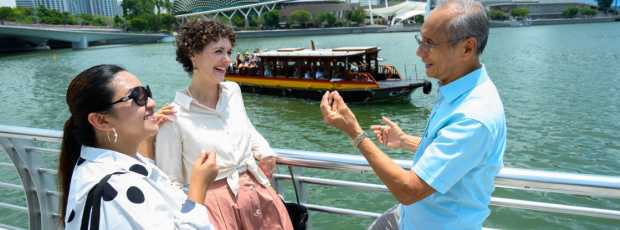Table Of Contents
- Buddha Tooth Relic Temple: Sacred Heart of Chinatown
- Chinatown Complex and Maxwell Food Centre: Hawker Heaven
- Historic Streets and Vibrant Markets
- Sacred Temples: Religious Diversity in Chinatown
- Hidden Gems and Local Treasures
- Dining Excellence and Nightlife
- Cultural Immersion and Learning
- Shopping and Local Commerce
- Planning Your Chinatown Adventure
When people ask me about the best things to do in Chinatown Singapore, I can't help but smile. They're about to discover one of our city's most genuine neighborhoods. Singapore Chinatown isn't another tourist trap. It's a living piece of Singapore's rich history that draws visitors from Japan and around the world.
What makes this district special? Pure authenticity. The food here is cooked by families who've perfected their recipes for decades. This famous district shows you exactly why Singapore is a must-visit destination for food lovers and culture enthusiasts. Many walking tours and food tours start here for good reason.
Buddha Tooth Relic Temple: Sacred Heart of Chinatown
The Majestic Temple Architecture
The Buddha Tooth Relic Temple stands as the majestic temple crown jewel of Singapore Chinatown. This five-story pagoda shows off traditional Buddhist design and is a famous stop on many Singapore temple tours. It houses one of Buddhism's most sacred relics.
Sacred Relics and Spiritual Atmosphere
Step inside and you'll see intricate woodwork and golden statues showing centuries of craftsmanship. The tooth relic sits on the fourth floor and brings pilgrims from across Asia. Early morning visits reveal elderly devotees chanting prayers, creating a deeply moving atmosphere. The tooth relic chamber's golden stupa feels almost mystical. You may occasionally see a monks-only ceremony in the inner areas.
Temple Museum and Rooftop Gardens
The temple has a fascinating museum with Buddhist art and artifacts from China and across Asia. The rooftop garden provides peaceful district views. Some inner sanctums are reserved for monastic use. Many visitors pick a guided tour, while heritage tours include this perfect spot for photography.
Chinatown Complex and Maxwell Food Centre: Hawker Heaven
Authentic Hawker Center Experience
The Chinatown Complex is everything I love about Singapore's hawker centers. This food center is where authentic food traditions thrive, with a wet market downstairs and the city's best food stalls above. Food tours frequently stop here to sample local favorites.
Traditional Cooking Methods
What makes the Chinatown Complex different? Pure authenticity. Vendors serve locals who've been coming for decades. You'll watch them achieve wok hei through skillful flame work and see how they balance herbs in soups perfected over generations.
Maxwell Food Centre Specialties
The Maxwell Food Center sits just steps from Chinatown near the Outram district. This legendary food center has seriously awarded hawker stalls that appear on countless food tours around Singapore. The Maxwell Food Center is famous for Hainanese chicken rice, consistently ranked among Singapore's best.
Diverse Food Options
Beyond chicken rice, both centers offer incredible variety. Char kway teow gets perfect wok hei, while traditional desserts use decades-old methods. You'll find refreshing niu che shui (sugarcane juice) freshly pressed at stalls. These hawker centers show Singapore's food scene and feature regularly on Singapore culinary tours.
Looking for a private city experience in Singapore?
Explore the city with a local who plans a private day just for you; no groups, no scripts.
Historic Streets and Vibrant Markets
Pagoda Street Heritage Walk
Pagoda Street forms the heritage corridor backbone, with preserved traditional shophouses. The area gets lively in the evenings when the Chinatown Street Market transforms these streets into busy marketplaces. Nearby Temple Street contributes to the authentic neighborhood feel. Walking tours often include this area, though it gets crowded during peak hours.
Pagoda Street gives you real glimpses into daily life, where shops serve locals with traditional medicines and household goods.
Evening Street Markets
The Chinatown Street Market runs along these streets in the evenings with excellent shopping. It serves locals and travelers with better quality and fair prices. Vendors share stories about their products and Chinatown history. Many Singapore tours include evening market visits.
South Bridge Road Architecture
South Bridge Road runs through Chinatown Singapore's heart, connecting major attractions with traditional shops and restaurants. This main road shows what makes Chinatown special, with restored shophouses housing modern businesses while keeping their historical character.
Sacred Temples: Religious Diversity in Chinatown
Sri Mariamman Temple Heritage
Sri Mariamman Temple, Singapore's oldest Hindu temple, stands as a testament to multicultural Chinatown Singapore. This vibrant temple on South Bridge Road serves the Tamil community with its colorful gopuram towering above surrounding Chinese buildings. Sri Mariamman Temple demonstrates how different communities have coexisted in Chinatown Singapore for over a century, creating a unique multicultural landscape.
Hindu Temple Architecture
Built by immigrants from Southern India, Sri Mariamman Temple has intricate sculptures showing Hindu deities, creating a riot of color against the quieter design of surrounding buildings.
Thian Hock Keng Temple History
Thian Hock Keng Temple, dedicated to sea goddess Mazu, represents the deep connection between Chinatown Singapore and its maritime history. This temple was built by Hokkien immigrants who wanted to thank Mazu for safe passage to Singapore. Thian Hock Keng Temple showcases traditional Chinese architecture at its finest, with no nails used in the original construction. The Thian Hock Keng Temple complex includes several halls dedicated to different deities, each serving specific community spiritual needs.
Islamic Heritage in Chinatown
The Jamae Mosque adds another layer to Chinatown Singapore's religious diversity. Masjid Jamae (also known as Jamae Chulia Mosque), built in 1826 by Tamil Muslims, creates a unique look that stands out among temples and shophouses. This mosque mixes Indo-Saracenic and Moorish styles, showing how Chinatown has always been more than just one cultural group. Nearby, the Al Abrar Mosque on Telok Ayer Street further showcases the area's Islamic heritage and multicultural character. Religious tours often include both mosques to showcase Singapore's Islamic heritage.
Hidden Gems and Local Treasures
Pek Sin Choon Tea House
Pek Sin Choon is one of those authentic Chinatown Singapore experiences that visitors often miss. This traditional tea house has been serving the community since 1925, giving you glimpses into tea traditions that haven't changed with modern trends. Pek Sin Choon creates a meditative environment that's getting harder to find in modern Singapore, where regulars come for traditional tea and conversation.
The atmosphere at Pek Sin Choon takes you back in time. Wooden furniture, traditional tea sets, and an unhurried pace create experiences that remind you how Chinatown Singapore has kept its cultural traditions despite all the rapid changes. Pek Sin Choon serves as a perfect spot for understanding traditional Chinese culture.
Ann Siang Hill Heritage
Ann Siang Hill is the trendy side of Chinatown Singapore, where heritage shophouses now house boutique establishments. The Ann Siang area shows you how Chinatown has evolved while keeping its old-world charm. Ann Siang and nearby Keong Saik streets give you a perfect mix of old and new, with traditional facades housing modern restaurants and bars. These areas prove that heritage conservation can work hand in hand with urban development. Historically, Keong Saik was once part of Singapore's red light district, but has transformed into a sophisticated dining and nightlife area.
Durian Delights
For durian lovers, some Chinatown vendors offer Mao Shan Wang durian when in season. Street vendors serve fresh fruit that's often cheaper than what you'll find in tourist areas. This kind of durian is especially popular when at peak ripeness, and Chinatown vendors know exactly when each fruit is ready.
What if your day in Singapore was planned by someone who knows it — and you?
City Unscripted matches you with a local host who creates a private experience based on your interests, not a set route.
Dining Excellence and Nightlife
Authentic Chinese Restaurants
Restaurants in Chinatown Singapore range from humble hawker stalls to upscale places, all sharing this commitment to real flavors. Chinese restaurants here serve food with traditional techniques and bold flavors, creating dining experiences that teach your palate about culinary traditions. From dim sum art to Cantonese roasting techniques, restaurants here work like living textbooks of gastronomy.
The dining scene has everything from street food to banquet-style meals, all keeping high authenticity standards. Diners get to taste food that shows genuine heritage, not watered-down versions for foreign palates.
Telok Ayer Bar Scene
Telok Ayer has become Chinatown Singapore's nightlife hub, with trendy bars taking over restored shophouses. These bars keep their heritage charm while serving up contemporary cocktail experiences that pull in both locals and visitors. The Telok Ayer bars create inventive cocktails using Asian ingredients and flavors, showing how Chinatown Singapore grows while respecting its heritage. The nearby Keong Saik area also adds to the nightlife scene with its own collection of sophisticated bars and restaurants.
Coffee has found its place in Chinatown Singapore, with traditional kopitiam shops working alongside modern coffee roasters. The contrast between old-school coffee preparation and contemporary brewing shows you how Chinatown welcomes both tradition and innovation.
Cultural Immersion and Learning
The Chinatown Heritage Centre museum provides essential context for understanding Chinatown Singapore's history. This museum recreates the living conditions of early Chinese immigrants, showing how families lived in cramped shophouse cubicles. The museum offers sobering reminders of the hardships faced by those who built Chinatown into today's thriving cultural district.
The museum shows artifacts and photographs documenting Chinatown Singapore's evolution from a struggling immigrant settlement to a thriving cultural district. Art galleries throughout Chinatown, Singapore, have both traditional and contemporary art, giving platforms for local artists while preserving traditional art forms.
Culture in Chinatown Singapore goes beyond museums and galleries. Street art, traditional performances, and cultural festivals add to the vibrant atmosphere. This living tradition keeps evolving while maintaining its core identity. This rich history and ongoing cultural life make Chinatown Singapore a must-visit destination for understanding Singapore's development.
Shopping and Local Commerce
Traditional medicine shops along main streets have consultations with trained practitioners who prescribe herbal remedies using ancient practices. These shops keep traditions that have been part of local heritage for thousands of years, giving communities alternative healthcare options. The best shops serve locals, selling traditional teas, medicines, and household items that have been sold here for generations.
Antique shops scattered throughout Chinatown, Singapore, have treasures for those willing to explore. These shops contain real artifacts alongside reproductions, working as repositories of Singapore's history. Shopping gives you insights into daily life beyond standard experiences, with shops having everything from souvenirs to authentic goods.
Tip
We match you with the right host, not just any guide.Want to experience the real Singapore with someone who lives there?
A fully private experience, planned and led by a local host who tailors the day to you
Planning Your Chinatown Adventure
Planning your visit to Chinatown Singapore needs some strategy to avoid crowded periods. Early mornings give you the best chances to experience Chinatown like locals do, with food vendors preparing for busy days ahead. This is especially true when visiting the Buddha Tooth Relic Temple, where morning prayers create the most authentic atmosphere. A whole day in Chinatown, Singapore, lets you explore thoroughly. Start with morning temple prayers, grab breakfast at traditional coffee shops, spend afternoons exploring museums and shops, and end with dinner at renowned hawker centers. Many Singapore tours follow similar itineraries, though self-guided exploration offers more flexibility.
The building design of Chinatown Singapore tells stories of community evolution. Shophouses show different construction periods, from simple early buildings to elaborate later structures. Understanding these features helps you appreciate neighborhood history and preservation efforts. For those interested in a deeper historical context, joining a guided tour can give you expert insights into the details and cultural significance of these heritage buildings. Transportation to Chinatown Singapore is convenient via MRT, but walking between attractions lets you discover hidden gems that make visits memorable.
This famous district has experiences that make Singapore unique. Not sanitized attractions but living neighborhoods where tradition and modernity coexist. Whether you're on a short trip or an extended visit, Chinatown Singapore gives you authentic experiences that capture Singapore's multicultural essence.
Chinatown Singapore keeps evolving while maintaining the character that makes it special. From traditional food preparation to contemporary art galleries, from ancient temples to trendy bars, Chinatown has something for every interest while maintaining its authentic character. As you plan your Singapore adventures, consider exploring other unique Singapore experiences that complement your Chinatown visit. Don't miss the things to do in Singapore airport during stopovers.
Ready to plan your perfect day in Singapore?
Start your experienceWhat if your day in Singapore was planned by someone who knows it — and you?
City Unscripted matches you with a local host who creates a private experience based on your interests, not a set route.
Want to experience the real Singapore with someone who lives there?
A fully private experience, planned and led by a local host who tailors the day to you











